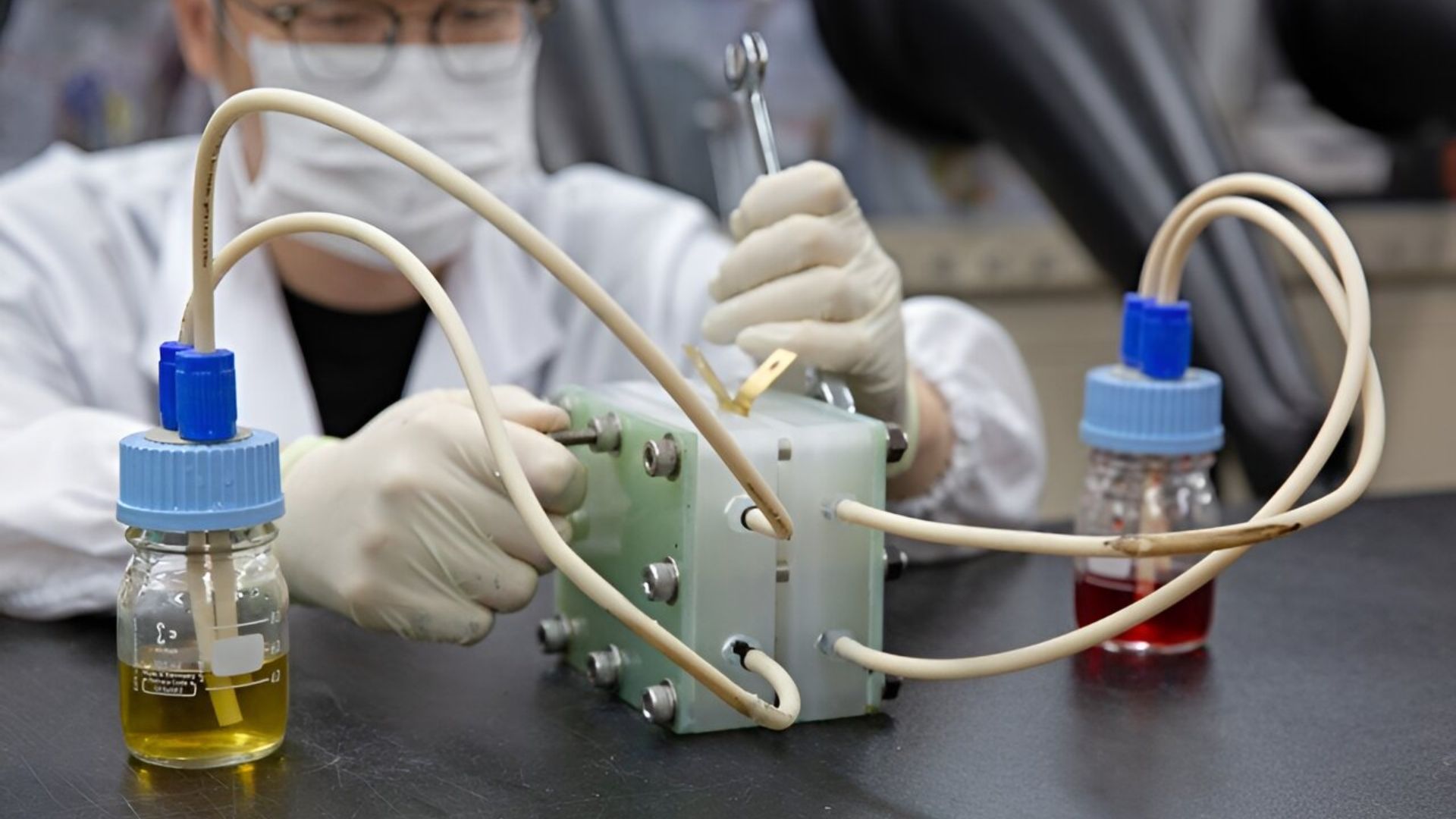Researchers from the Energy Storage Research Department of the Korea Institute of Energy Research have found an alternative to vanadium, a key component of redox flow batteries, an area of active research worldwide.
Research has shown that vanadium mined from the ground can be replaced with readily available molecules consisting of carbon and oxygen.
Renewable energy technologies such as wind and solar can only be deployed on a large scale if a suitable energy storage solution is available. This storage solution can help overcome the intermittent nature of the energy generation of this technology and provide power when needed, even when the sun is not shining or the wind is not blowing.
A reliable energy storage solution must be able to hold a charge for more than eight hours and deliver it immediately when demand increases. Redox flow batteries are a much preferred solution in this domain.
Why are redox flow batteries so good?
Redox flow batteries are electric cells that store energy in the electrolyte instead of in an electrode, as in lithium-ion batteries.
Redox flow batteries are better than lithium-ion batteries because they have a flexible layout, which drastically reduces the risk of fire. The capacity of the battery can be easily scaled up by increasing the size of the stack.
Because there are no solid-to-solid phase transitions, the battery has a longer shelf life and continues to deliver superior energy performance even after twenty years.
The only drawback to the redox flow battery is that it uses vanadium, which is not a rare earth mineral but is already used in commercial processes and has limited reserves. To avoid a similar fate to lithium, researchers have been looking for more abundant substitutes for vanadium and have found them in viologens.
How are viologens helpful?
Viologens are organic compounds made from abundantly available elements, such as carbon and oxygen, that do not need to be mined. Previous research into using viologens as a replacement for vanadium has been hampered by low solubility in the electrolyte.
The lower solubility of viologens leads to lower battery energy density and instabilities in the charge and discharge processes. To overcome these hurdles, the researchers introduced functional groups into the viologens, which fit into these organic molecules as assembly blocks and improved their stability.
The research team used the sulfonate and ester functional groups, which are water-friendly and therefore spread more easily in the electrolyte.
The addition of functional groups also solved another problem with the use of viologens. Their molecular shape resembles a sandwich and sometimes two layers of viologens combine, making them unsuitable for holding charge.
The researchers added alpha-methyl functional groups that prevent the combination of two viologens, making them always available for storing energy. The end result of adding these functional groups was that the researchers achieved an energy density twice that of a flow battery made with vanadium.
After 200 charge and discharge cycles, the researchers found that their new battery had a coulombic efficiency of 99.4 percent and a capacity retention of 92.4 percent. Both indicators indicate improved performance and stability.
The research results were published in the journal ACS Applied materials and interfaces.
ABOUT THE EDITORS
Ameya Paleja Ameya is a science journalist based in Hyderabad, India. A molecular biologist at heart, he traded in the micropipette to write about science during the pandemic and hasn’t looked back. He enjoys writing about genetics, microbes, technology, and public policy.
